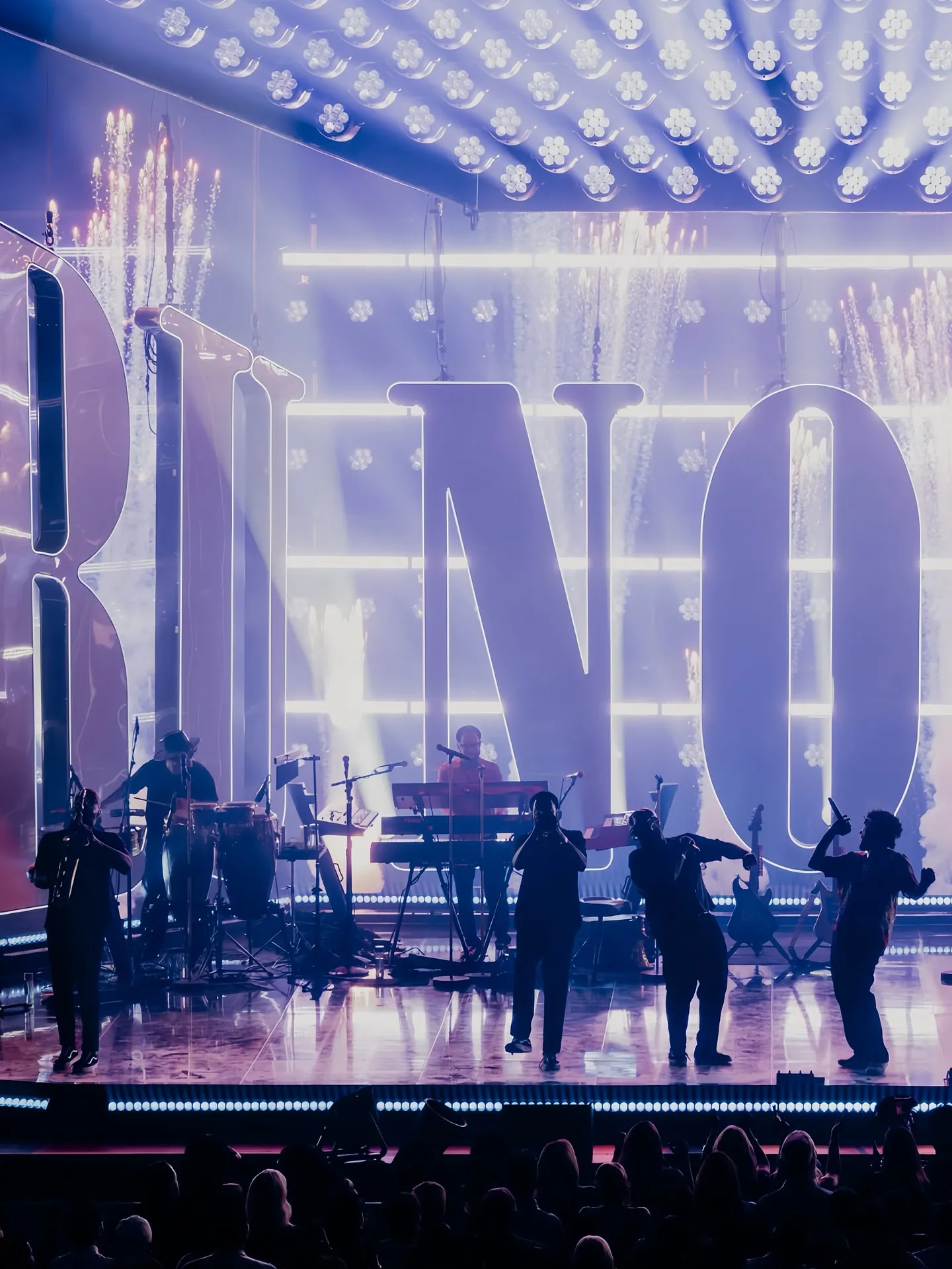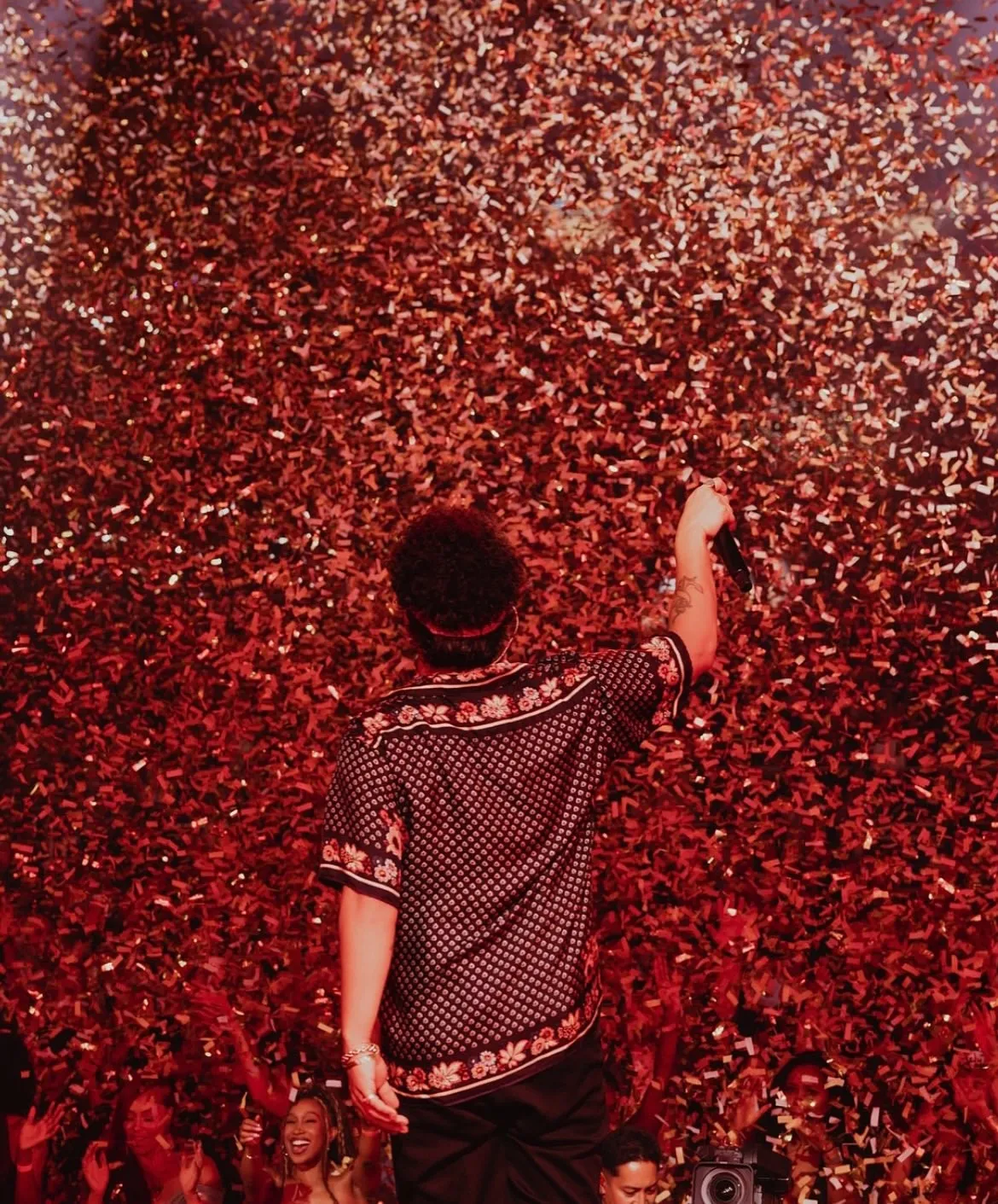

Bruno Mars, His Roots, and the Sounds of Home: How Filipino & Puerto Rican Heritage Shaped Eight of His Biggest Hits
In an era where pop music sometimes feels packaged and borderless, Bruno Mars stands out because his songs sound like people — layered, warm, and traceable to very specific memories. Bruno has repeatedly said that everything he creates is “filtered through rhythm, soul, and the stories of his childhood.” Those words matter. They point to a musician whose artistry isn’t constructed in a vacuum but is grown from two distinct cultural soils: the Filipino traditions of his mother and the Puerto Rican influences from his father.
This piece explores that claim in detail. Drawing from Bruno’s own reflections and a careful read of his catalog, we’ll unpack how Filipino serenades, Caribbean pulse, disco-funk, doo-wop, and community festival energy all converge in his most famous records. We’ll analyze eight landmark tracks he himself has pointed to as bearing the stamp of his heritage — and show, concretely, how cultural memory shapes melody, rhythm, instrumentation, stagecraft, and identity. Finally, we’ll ask: what is Bruno proud to keep from home, and why does it matter to listeners around the world?
Roots in Rhythm: What Filipino and Puerto Rican Musical Traditions Bring to the Table
Before diving into specific songs, it helps to map the sonic features Bruno inherits from each side of his family.
Filipino musical culture often centers on communal song traditions — serenades, kundiman (traditional love songs), and church-based vocal styles that emphasize heartfelt melody and close harmonies. These styles prize lyrical directness, emotive phrasing, and the kind of tender, intimate delivery you hear during family gatherings and fiestas. Instruments traditionally accompanying these songs range from acoustic guitars to light percussion; the aim is emotional connection.
Puerto Rican and broader Caribbean music brings contagious rhythm and syncopation — salsa, plena, bomba, reggae and the Afro-Caribbean rhythmic languages that underpin much of Latin and Caribbean pop. These idioms favor polyrhythms, brass punctuation, call-and-response patterns, and grooves that make people move. From percussion textures (congas, timbales, shakers) to the way a bass line locks with the drums, Caribbean influences are primarily rhythmic and kinetic.
Bruno’s genius lies in synthesizing these legacies. He keeps the Filipino gift for melody and sentiment and pairs it with Puerto Rican/Caribbean propulsion and swagger. The result: songs that can make you both cry and dance.
The Eight Tracks: Cultural Echoes in Bruno’s Biggest Songs
Below are close reads of eight songs Bruno credits as shaped by his cultural roots. For each, we look at the musical ingredients and the emotional DNA supplied by his Filipino and Puerto Rican inheritance.
“Just the Way You Are” — Serenades and Heartfelt Simplicity

At its core, “Just the Way You Are” is a modern serenade: simple, direct, and single-minded in its devotion. Bruno has linked the song’s spirit to the tradition of family serenades he observed growing up. Musically, the track’s stripped arrangement — piano-led, with a clean verse-chorus melody — mirrors the intimate, vocal-forward approach of a kundiman or a Filipino serenade.
How the roots show: The phrasing emphasizes lyrical clarity and tenderness; the vocal delivery sits in the pocket between pop restraint and soulful confession — a hallmark of Filipino romantic music where the lyric is the pilgrimage and the melody the prayer.
“Locked Out of Heaven” — Caribbean Push, Reggae-Rock Fusion
This hit channels a driving, percussive energy reminiscent of reggae and Afro-Caribbean grooves. The off-beat accents, staccato guitar hits, and a vocal performance that rides the rhythm rather than floating above it are all features common to Caribbean-influenced pop.
How the roots show: The song’s emphasis on groove over lush harmonic movement reflects Puerto Rican/Caribbean lessons: make the body move first, let the heart follow. The production borrows reggae’s clipped feel and combines it with rock punch — a cross-cultural hybrid that’s kinetic and unforgettable.
“Treasure” — Disco-Funk Memory and Communal Joy
“Treasure” is a disco-funk love letter. Its shimmering rhythm guitar, punchy bass, and horn-like synth stabs evoke party halls and community dances. Bruno ties this sound to family memories: gatherings where multiple generations showed up to play and dance.
How the roots show: The song’s groove is communal in origin — like a festival soundtrack where everyone contributes to the vibe. The Filipino side provides the communal warmth; the Puerto Rican side supplies the energy that keeps feet moving.
“Uptown Funk” (Mark Ronson feat. Bruno Mars) — Festival Vibes and Dance Traditions
Although credited primarily to Mark Ronson, Bruno’s voice and performance are integral. “Uptown Funk” channels the celebratory, performative aspect of Filipino fiestas and Puerto Rican street dances: big, brassy, and theatrical. The track is essentially a festival anthem.
How the roots show: Bruno’s rhythmic vocal delivery, call-and-response hooks, and the song’s insistently forward momentum recall the exuberance of community celebrations — where music is both ritual and release.
“Versace on the Floor” — Intimacy, Drama, and Family Balladry
This slow, richly arranged ballad brings forward an older-school, intimate style. Bruno describes family gatherings of soulful singing and dramatic storytelling; “Versace on the Floor” mirrors that. The arrangement gives space for emotional nuance, much like a tender family performance.
How the roots show: The song favors detailed vocal ornamentation and a focus on the lyric narrative — a trait borrowed from Filipino melodrama and the expressive storytelling valued in Latin ballad traditions.
“Finesse” — New Jack Swing and Multi-Cultural Bounce
“Finesse” channels the New Jack Swing era — beat-driven, syncopated, and sassy. Bruno’s upbringing, exposed to multiple urban genres, allows him to adopt that bounce and make it his own.
How the roots show: The track’s rhythmic interplay and vocal swagger nod to the streetwise energy of Puerto Rican urban styles, while Bruno’s lyric delivery and playful melodic turns exhibit the communal, performance-centered Filipino ethos.
“Leave the Door Open” (Silk Sonic with Anderson .Paak) — Doo-Wop, R&B Tradition, and Old-School Romance
This modern doo-wop/R&B ballad traffics in close harmonies, vintage chord movements, and vocal interplay that pay homage to older American soul, which in Bruno’s worldview is inseparable from community music — songs passed down and sung in living rooms and churches.
How the roots show: The emotional clarity and harmonic warmth mirror the close-knit singing traditions Bruno experienced in family and community settings. The arrangement, warm and analog-sounding, evokes old jukeboxes and neighborhood serenades alike.
“Talking to the Moon” — Spiritual Introspection and Filipino Musical Prayer
Described as possessing spiritual and interior elements, “Talking to the Moon” resonates with the Philippines’ long tradition of music that intersects with prayer and longing (think lullabies, hymn-like melodies, and plaintive ballads).
How the roots show: The song’s spare instrumentation and plaintive melody create space for inward reflection — a sonic posture aligned with the contemplative songs of Bruno’s Filipino heritage.
Musical Mechanics — How Heritage Translates into Sound
Saying “this track is influenced by X” is the easy part. The more useful question is how those influences manifest in the music. Here are the core mechanisms:
Rhythm & Groove

Puerto Rican and Caribbean roots show up in syncopation, percussion choices, and the way the bass and drums interlock. Even in pop contexts, Bruno often prioritizes groove as the foundation: an infectious rhythmic pocket that invites movement.
Melodic Phrasing
Filipino influences surface in lyrical phrasing and vocal ornamentation. The melodies often bend, emphasize emotional syllables, and privilege a human voice that tells a story rather than merely executing pop hooks.
Instrumentation & Texture
Brass stabs, percussive hand-drums, warm analog keyboards, and clean funk guitars recur across Bruno’s hits. These color choices — whether overt or synthetic — echo the instrumentation heard at family gatherings and Caribbean parties.
Communal Arrangement
Many of Bruno’s songs are structured to feel like a conversation: call-and-response, backing vocal clusters, and sections that feel like crowds chiming in. That communal approach is a direct descendant of family and festival music-making.
Lyrical Themes
Love, celebration, confession, and spiritual yearning are repeated motifs. Filipino serenades and Puerto Rican boleros/ballads often center precisely on these themes, and Bruno retools them for modern pop.
Performance & Stagecraft: From Living Room to Global Stage
A musician’s cultural roots impact not only studio songs but live persona. Bruno’s stagecraft — slick suits, choreographed moves, banter with the crowd, and a constant invitation to dance — resembles festival hosts who command both respect and participation.
Filipino hospitality shows up in Bruno’s warmth and tendency to create intimate moments, even during stadium shows. Puerto Rican fiesta culture informs the kinetic side of his performance: brass sections, call-and-response, and the insistence that music is for dancing.
This blend makes Bruno a “universal entertainer”: his shows feel both polished and homey, stylish and communal.
Identity, Brand, and the Pride of Heritage
Bruno’s vocal acknowledgment of his multicultural roots is not incidental marketing — it’s brand authenticity. In a globalized music market, authenticity is currency. Fans today look for narratives: who a performer is, what they value, and where their music comes from.
By foregrounding his Filipino and Puerto Rican lineage, Bruno achieves several things:
-
Authenticity: He resists the flattening effect of generic pop by anchoring his sound in personal history.
-
Representation: He provides visibility for Filipino and Puerto Rican musical legacies on global platforms.
-
Differentiation: The cross-genre versatility that results becomes a competitive advantage — his music appeals across demographic lines precisely because it’s rooted in specific cultures.
Bruno’s pride in his heritage — the things he says he “won’t miss” from home — is important. He keeps the communal song, the pulse, and the emotion-first approach. Those are cultural gifts he refuses to shed.
Why This Matters: Cultural Resonance and Global Audiences
The broader significance of Bruno’s cultural synthesis is twofold.
First, it demonstrates how interwoven global pop has become: artists don’t merely borrow a beat; they internalize diasporic experiences. Bruno’s music is an example of diaspora soundscaping: heritage that travels, adaptively re-emerging in new forms.
Second, it underscores why representation matters. For listeners from the Philippines, Puerto Rico, or multicultural households worldwide, Bruno’s music does more than entertain — it affirms identity.
Nuance & Critique: Complexity in Cultural Storytelling
A few caveats are necessary. Celebrating identity-based influence risks oversimplifying. Not every synth stab or percussion loop is a literal “Filipino” or “Puerto Rican” marker. Music evolves through countless filters: producers, collaborators, label pressures, and commercial trends.
Also, listeners and critics might reasonably ask for deeper transparency. When an artist cites cultural influence, some fans want concrete musical taxonomy — e.g., “this chord voicing comes from kundiman” or “this rhythm comes from plena.” Bruno’s public reflections invite those conversations, and a more granular musical analysis from ethnomusicologists could add clarity.
Finally, there’s the responsibility that comes with representation. Artists who reference their roots must balance artistic reinterpretation with respect and acknowledgment toward the originating cultures — a balance Bruno largely strikes by crediting his upbringing rather than exoticizing it.

Lessons for Emerging Artists & Industry Players
Bruno’s career offers a playbook for how to use heritage as creative fuel:
-
Start with authenticity. Let personal memory guide decisions about melody and mood.
-
Translate, don’t transplant. Filter traditional elements through contemporary sensibilities rather than copy them verbatim.
-
Build a communal feel. Use backing vocals, call-and-response, or festival-like arrangements to evoke the feeling of shared music-making.
-
Own the narrative. Speak openly about influences; audiences appreciate the origin story.
-
Protect the work. When integrating traditional elements, collaborate with culture-bearers and ensure proper credit.
A Short Musical Anatomy — How to Hear Bruno’s Roots in Practice
If you want to train your ear, listen for these micro-signals:
-
Melodic ornamentation — small bends, melismas, and vocal slides point to Filipino vocal styles.
-
Syncopated bass hits — off-beat emphasis and two-bar rhythmic patterns nod to Puerto Rican/Caribbean grooves.
-
Brass punctuation — short horn stabs and arrangement choices mimic festival brass sections.
-
Analog warmth — vintage keyboards and reverb choices echo older R&B and doo-wop textures often sung at family gatherings.
-
Communal backing vocals — stacked, human harmonies that create a “room” feeling.
Once you know what to listen for, Bruno’s catalog reads like a map of migratory sounds: homeformed ideas traveling into global pop.
Conclusion — A Global Pop Star Who Keeps the Sounds of Home
Bruno Mars’ music exemplifies a modern truth: pop that endures is often rooted, not rootless. By consciously threading Filipino serenade intimacy and Puerto Rican/Caribbean rhythmic vitality through his songs, Bruno constructs music that is both widely accessible and deeply personal.
He keeps the parts of home that shaped his musical imagination — the communal singing, the danceable groove, the soulful confessions — and re-proposes them as modern hits. That’s why his records can live in stadiums and in living rooms, on radio playlists and at family gatherings. Bruno’s choices about what to preserve are not merely nostalgic; they’re strategic, identity-affirming, and artistically fertile.
For listeners worldwide, the takeaway is simple: the most universal art often grows from the most particular soil. Bruno Mars’ body of work proves that when musicians honor their roots — when they keep what they are proud of and make it sing in contemporary language — the result can be enduring, beloved, and, above all, honest.


















